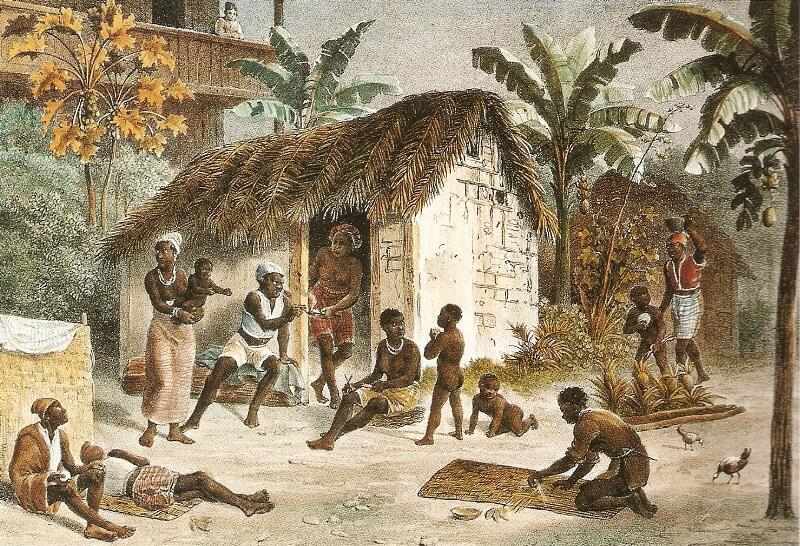
Slavery in Brazil: Economic Sectors

Figure 1.--This paintings show the life of Brazilian slave families. It was done by the German painter Johann Moritz Rugendas (1802-1858). We see slave huts near the house of their owners on a sugar plantation. Rugendas worked in Brazil during 1821-25.
|
|
Slavery in Brazil is strongly associated with plantation agriculture, especially the sugar industry. Slavery became particularly important in the mining and sugar cane sectors. use the working conditions in both sectors were not conusive for free labor. The sugar industry was the most important at it was here that most of Brazil's slaves were employed. Slavery was also the mainstay in the Caribbean islands with economies centered on sugar. The Portuguese who settled Brazil needed labor if they were to develop large estates and mines in their new Brazilian colony. They turned to sugar and slavery which became central to the colonial economy. Slaves were set to the back-breaking task of digging large trenches using hoes. They then planted the cane in the trenches and used bare hands to spread manure for fertilizer. Cutting the matured can was another major effort requiring manual labor. Brazil became the world's largest producer of sugar. The sugar industry began on the Caribbean islands. The Dutch helped bring it to Brazil. Eventually the huge Brazilian estates increased production to the point that it brought down sugar prives, affected the profitability of production on the Caribbean sugar islands. Some Brazilian planters began to turn to coffee (1830s). This was at the time of the Great Bahia Slave Revolt (1835). It was at the very last phase of slavery in Brazil as pressure from abroad was beginning to move Brazil toward emancipation. Rubber plantations appeared in the late-19th century. By this time, Brazil had ended slavery. Native Americans, however, experienced slave-like conditions a msany of these plantations.
CIH

Navigate the Children in History Website:
[Return to the Main slavery in Brazil page]
[Return to the Main Brazilian slavery page]
[Return to the Main American slavery page]
[Return to the Main Brazilian history page]
[Return to the Main working page]
[About Us]
[Introduction]
[Biographies]
[Chronology]
[Climatology]
[Clothing]
[Disease and Health]
[Economics]
[Freedom]
[Geography]
[History]
[Human Nature]
[Ideology]
[Law]
[Nationalism]
[Presidents]
[Religion]
[Royalty]
[Science]
[Social Class]
[Bibliographies]
[Contributions]
[FAQs]
[Glossaries]
[Images]
[Links]
[Registration]
[Tools]
[Children in History Home]
Created: 7:17 AM 10/25/2010
Last updated: 7:17 AM 10/25/2010



